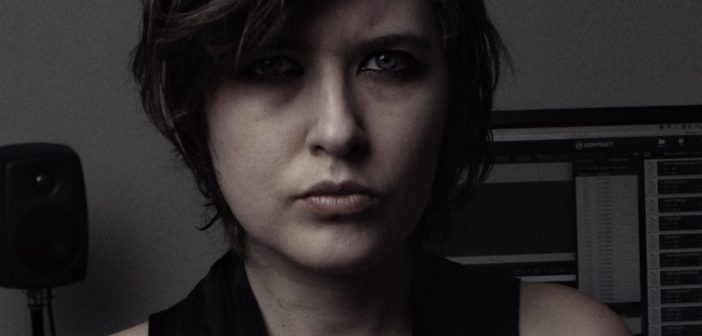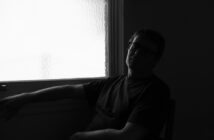Thembi Soddell is an Australian sound artist and electro acoustic composer who creates intense, often quite volatile suites of sound. On her two solo albums (Instance and Intimacy) and her collaborative releases with cellist Anthea Caddy (Host and lland), she regularly explores dynamic extremes and abrupt shifts in sound. She describes her latest album, Love Songs (Room40), as “a meditation on the lived experience of insidious forms of abuse with-in supposedly loving relationships, in connection to certain forms of mental illness.” Her label describes it as “one of the most fierce sonic expressions to be delivered from an Australian artist in recent years,” and we agree. There’s a bleak desolate feel punctuated by jarring moments of visceral violence. It’s definitely uneasy listening. To celebrate the release of Love Songs we asked Thembi about some of the music that moves her.
10 works related to my PhD.
I’m in the throes of writing my PhD dissertation, so I’ve chosen 10 works related to my research. It’s a practice-based PhD investigating with how I might represent and/or understand lived experiences of trauma, distress and madness using musique concrete and acousmatic sound. When reviewing other artists, I’ve not just been looking at people who set out to create works about these things, but those who in some way work with shifts in perception, psychological experience or sound as expressive of intense emotion.
Verónica Mota is a sound artist who is interested in surrealism, dream territories and the human subconscious. This quote from an interview with Mota sums up why I’m a fan of her work:
“Many of my compositions try to take the listener to a dark place, the mind, where the subject is free to experience her/himself as a surrealistic poem. The journey is complex and sometimes even painful because the audience is confronted with their own dreams and fears which usually they suppress in daily life. To open a door to the human mind using the power of sound is a way to find who we really are and/or would love to be. It is all about our dreams and self realization. Sound can be a key to get there.”
This particular work, 43 Dead Human Bodies, was a response to the disappearance and killing of 43 students from Ayotzinapa Rural Teachers’ College in the Mexican state of Guerrero. The piece was created as a kind of shamanic sonic ritual – “a call to stop the wave of death and blood.”
Diana Deutsch – Phantom Words (Philomel Records)
Diana Deutsch is a musicologist who studies the perception of sound and music. She created the work Phantom Words to illustrate the way our perception fills in gaps when input is limited. Listen to it on loud speakers and take note of the words you hear emerge, which are created by your brain not the music itself. This illustrates how the mind fills in the blanks in the absence of complete information, trying to make sense of what is being heard. Deutsch noted that when she performs this exercise on her students she can tell things about their situation at the time, like those on a diet are more likely to hear the words “I’m hungry” or at exam time phrases such as “I’m tired” or “no brain” are more often reported.
Diamanda Galas – Plague Mass (Mute)
Diamanda Galás’s album Plague Mass (1990) is heavy with intense, violent emotion. Recorded from a live performance at the Cathedral of St. John the Divine in New York City she rages against the homophobia and silence from the Catholic Church in response to the HIV/AIDS epidemic. The tenth track on the album, Consecration, was performed under red light as Galás covered herself in ceremonial blood. Within this piece, the low sounds and their rhythms all work together to imbue a heavy, powerful emotion. As Galás shifts to high pitched singing/screeching this feels like an extrication of dark, terrifying, heavy emotion—a forceful expulsion from the body and into the world. An antidote to silence.
Eliane Radigue – Kyema, Trilogie de La Morte (Experimental Intermedia)
The works of French electronic music composer Eliane Radigue have a profound effect on the experience of time perception. The first work Kyema from her Triliogie de la Mort (Trilogy of Death) was inspired by The Tibetan Book of the Dead. Within this track, the experience of alteration in time perception seems to arise from the interaction between differing frequencies pulsating at different rates. Time anchors to these rhythms, and as they slowly shift—often on the edge of conscious awareness—so too does perception of time. Time seems to stand still while remaining in perpetual motion, as if suspended in a moment of shifting time; a continuing state of transition and stasis. This reflects the way perceptual experience can feel paradoxical, like an expansion and contraction of the mind occurring together in one moment. This track is also just nice to fall asleep to.
Camille Norment
Camille Norment is a multimedia artist based in Oslo, whose work highlights the connection between body, perception, psychology and sound. I’m most interested in her sound installations, including works such as Groove and Notes from the Undermind, which address aspects of perceptual disorientation and its unnerving quality. Groove involves the playback of sound frequencies that are inaudible but can be felt by the body, perceivable only when passing through a specific point in the gallery. Notes from the Undermind is a padded cell containing resonating poles, which ring at different frequencies. The dissonant ringing is described in the artist statement as symptomatic of psychosis. But since these installations can’t be experienced on the internet, here’s a performance of Norment’s, alongside David Toop, where she’s playing the glass armonica. According to the description, this instrument was once banned “because it was thought to induce states of ecstasy and arouse sexual excitement in women”. So, this one goes out to the ladies. Ha!
Robert Lepenik – PoSTepeno (God Records)
Austrian composer and guitarist Robert Lepenik’s work PoSTepeno is based on a collage by an anonymous patient of a Viennese mental asylum (circa late 1800s), known only as Frau ST. Composed for piano and sine tones, the work comprises of minimal layers of sine tones that slowly move up and down in frequency alongside gentle, considered piano notes. Despite the gentleness of this work, the constant shifting of the underlying tones has a destabilising effect, gently disorienting the bearings of perception.
Alice Hui-Sheng Chang (performances)
Alice is a Taiwanese vocalist working with extended technique. I most enjoy her use of space, silence, stops and starts and the intensity of her timbres, as well as her interactions with the acoustics of a performance space. Alice contributed a session of vocal recordings for me to experiment with while working on my PhD, and I’ve been working with those samples for quite a lot of things beyond it too! A good amount of the sounds on my most recent album, Love Songs, were taken from samples of Alice’s voice. Thank you Alice!
Francisco Lopez (performances)
The first performance of Francisco Lopez’s that I attended was back in 2001. I think it’s pretty safe to say it was a big influence on me. There was something about the way the power of the sound connected with my emotional experience, capturing something of the anxiety, disconnect, anger and fear that was all rolled into a tight, entangled mess inside me. Even though that’s not so much where López is coming from with his work, it set me down the path of using sound to explore emotional extremes and experiences that are beyond representation with words. I’ll attend his concerts whenever I get the chance, but funnily enough I don’t own any of his albums so I’m not quite sure what to pick here. He’s one of those artists whose work I prefer the physical experience of than anything else.
Maria Chavez – Of Technique: Chance Procedures on Turntable
Maria Chavez is someone I came across during my PhD research whose work is not so relevant to my topic, but I found it inspiring hearing her speak about her approaches to her practice. Her work ‘Of Technique: Chance Procedures on Turntable’ is not an album or track as such, but a book of instructions on how to carry out the unique set of techniques she’s developed for working with turntable. Here I’ve linked to a performance she did at the Contemporary Arts Museum Houston where she’s using some of those techniques, and I recommend checking out the talk that goes with it: https://www.youtube.com/watch?v=plDE1g6TZfE
Missy Elliott – I’m Better (Atlantic)
Ok, so this one has nothing to do with my PhD, but the secret to surviving the writing (particularly when dealing with such a heavy topic) is frequent lounge room dance sessions and/or lip syncs. Some favourites include Britney Spears’ Femme Fatale album, Kesha’s track Woman, Nicki Minaj’s Trini Dem Girls, Chris Porter’s Water Dance. But no one can beat Missy Elliot. This video (and song) is perfection! It’s all about what’s implied by the spaces, the intensity, the perceptual thresholds. And that dancing! I love it!
You can find out more about Love Songs here.
And make sure you check out her very unique video clip of Epilogue from the album, you can find it here.




